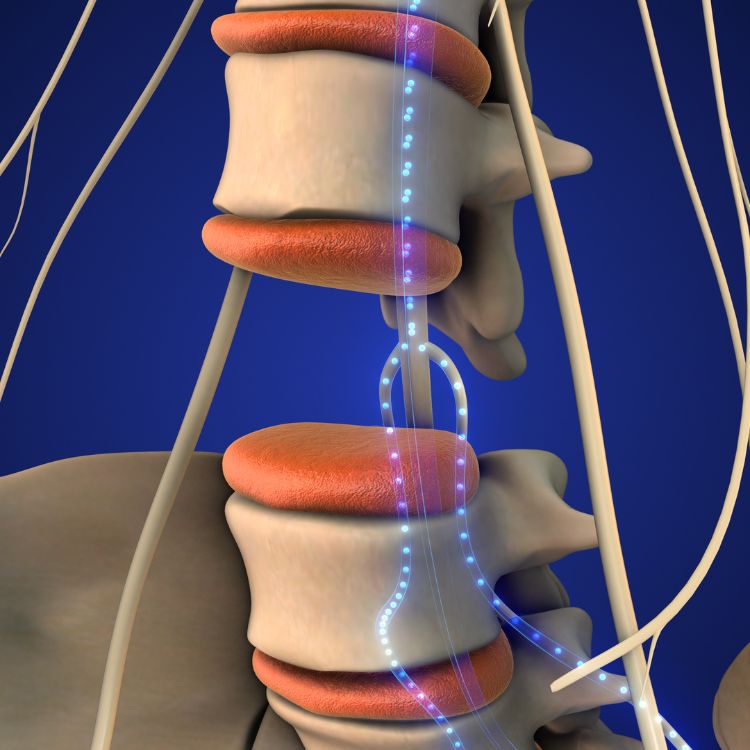How Does a Spinal Cord Stimulator Relieve My Pain?
A spinal cord stimulator uses mild electrical pulses to block pain signals traveling through the spinal nerves to your brain. When your brain doesn’t get the pain message, you won’t feel the full force of the pain.
After having a spinal cord stimulator implanted, most patients report a 50-70% drop in their pain; enough to make your pain more manageable and give you the opportunity to regain an active life.
What Pain Conditions Do You Treat with a Spinal Cord Stimulator Implant?
Spinal cord stimulation is a proven therapy for treating neuropathic pain. You can develop this type of pain from certain health conditions, such as:
- Diabetic neuropathy
- Peripheral neuropathy
- Complex regional pain syndrome (CRPS)
- Facet joint osteoarthritis
- Herniated disc
- Spinal stenosis
- Sciatica
Spinal cord stimulation generally works well for chronic back, leg, and arm pain.
Spinal Cord Stimulator Implant Process
Spinal cord stimulators consist of three parts: a generator, lead wires, and a controller. Your doctor at Advanced Pain Management implants the generator under your skin, usually placing it in the abdomen or upper buttock.
After threading the flexible lead wires along your spine, your doctor places electrodes near the spinal nerves transmitting pain signals. The electrodes are connected to the generator and your doctor programs the desired pulse strength and frequency using the controller.
How Do I Know if I Am a Good Candidate for a Spinal Cord Stimulator Implant?
Your Advanced Pain Management doctor follows several steps to determine if you’re a good candidate. The process begins with a thorough review of your medical history.
You may be a good candidate if:
- Your pain has lasted three months or longer
- Other treatments haven’t relieved your pain
- Surgery isn’t likely to help or you can’t have surgery
- You don’t have any untreated drug addictions
- You don’t have a pacemaker or other contraindications
- You’re willing to take an active role in improving your quality of life
You must also clear a psychological evaluation and have a successful spinal cord stimulation trial.
What Happens During My Spinal Cord Stimulation Trial?
Your doctor implants a temporary stimulator, then you wear the device for a minimum of 24 hours or as long as several weeks. If your trial is successful and your symptoms improve, your doctor implants the permanent stimulator.
Benefits of the Spinal Cord Stimulator Implant
The system replaces pain with a feeling of gentle massaging or, in some cases, simply the absence of pain. A number of studies have found that Spinal Cord Stimulators can provide a reduction in pain, allow for the reduced use of pain medication, improve function and mobility, and make it possible for some people who have left work due to the pain to return to work.
Many patients get pain relief as soon as they have the initial trial system placed. Sometimes, leads must be adjusted for optimum pain relief and coverage of the painful area. Studies have shown that a large number of patients still have at least a 50 percent reduction in their pain several years after the original implant.


